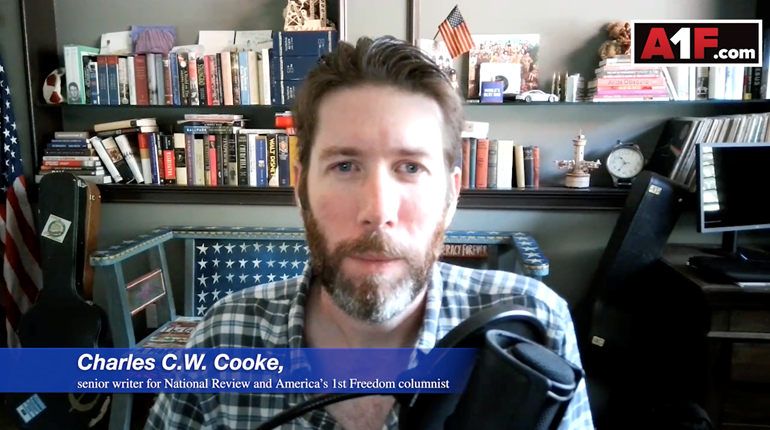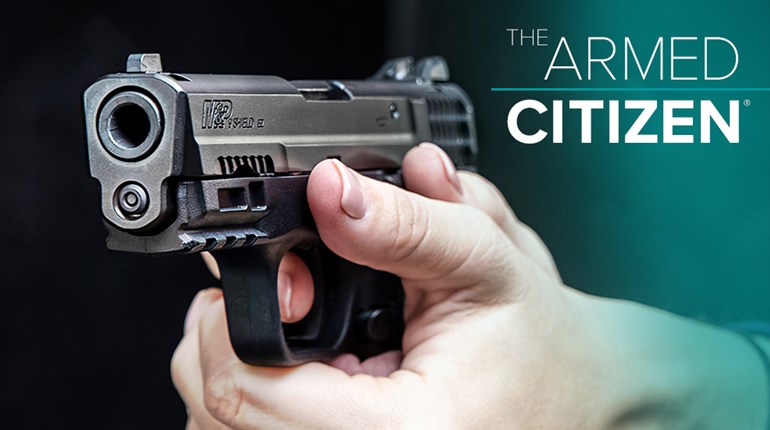
This year, the Supreme Court of the United States will issue its ruling in the case of New York State Rifle & Pistol Association Inc. v. Bruen. At stake in this case is a simple question: Does the Second Amendment guarantee all law-abiding Americans the right to carry concealed firearms outside the home for the purpose of self-defense?
Or, to put it another way: Does the Second Amendment require a “shall-issue” standard for the dissemination of concealed-carry permits? (In a “shall-issue” jurisdiction, licensing authorities must issue a permit to any citizen who is not prohibited by law from using their Second Amendment-protected right to keep and bear arms.)
At the root of this case is the position held by the state of New York that local officials can require residents to somehow prove—to a licensing official’s individual satisfaction—that they have a special need to use this constitutionally protected right. As New York state officials argue this position, they ignore the reams of evidence we’ve accrued over the last 40 years showing this right is not a problem in need of a solution.
There is a profound legal question at stake in Bruen, and yet, as the state’s lawyers made clear during last year’s oral arguments, their argument is primarily practical in nature. New York’s “proper-cause” laws, they insist, are necessary in order to protect “public safety.” More specifically, New York believes that its “may-issue” regime is necessary because it is applied to “areas where people are packed densely together,” which they say helps prevent “a lot of armed people in an enclosed space.” They say “proliferating guns in a populated area where there is law enforcement jeopardizes law enforcement.”
Simply put, they don’t trust we the people with our rights.
The thing is, there are plenty of jurisdictions in the U.S. that have long gotten out of the way of citizens’ freedom; in fact, there are plenty of cities in “shall-issue” jurisdictions in which “people are packed densely together”—among them, Houston, Phoenix, San Antonio, Dallas, Austin, Jacksonville, Fort Worth, Columbus, Indianapolis, Charlotte, Seattle, Denver, Nashville, Atlanta, Oklahoma City, El Paso, Portland (Oregon), Las Vegas and Detroit—and there is no evidence that the dramatic shift to “shall issue” that Americans have enjoyed over the last four decades have made any of those cities (or anywhere else) less safe.
The Experiment has Been Run
In 1986, eight American states had “shall-issue” rules, and one (Vermont) did not prohibit the carrying of a concealed firearm by law-abiding citizens—what is now often referred to as “constitutional carry.” By contrast, 26 states had “may-issue” regimes, and 16 refused to issue permits at all. By 2001, the number of “shall-issue” states had grown to 31, with 11 states retaining their “may-issue” rules and seven states continuing to refuse to recognize the right to bear arms. Today, every single state issues permits of some sort, with, as this was being written, 21 states declining to require permits at all, 20 states granting them on a “shall-issue” basis and nine clinging to their “may-issue” approach. Of those nine “may-issue” states—California, Connecticut, Delaware, Hawaii, Maryland, Massachusetts, New Jersey, New York and Rhode Island—all but Connecticut are closer in practice to having a “no-issue” standard than they are to having a “shall-issue” standard.
At every stage of this process, critics of concealed carry predicted that the move to “shall issue” (or constitutional carry, for that matter) would lead to “shootouts in the street,” to rising murder rates and to the nationalization of the “O.K. Corral.” Instead, it led, at best, to a sustained reduction in crime, and, at worst, to nothing much at all.
In 1986, when the push began in earnest, the national murder rate was 8.5 per 100,000 Americans. By 2019, that number was 5 per 100,000 Americans. Thanks partly to the COVID-19 pandemic, that number has increased during the last two years, but as CNN has reported, “these increases are not isolated to any particular region of the country,” and they do not follow any obvious political pattern. “Almost all the largest cities in the United States,” CNN confirms, “have seen an increase in homicides from 2019.” Baltimore and Los Angeles—both of which are in “may-issue” states—have seen increases. Louisville and Houston—both of which are in constitutional-carry states—have seen increases. New York City—which, in practice, is a “no-issue” jurisdiction—has seen an increase. Columbus and Albuquerque—both of which are in “shall-issue” states—have seen an increase. There is no rhyme or reason to the rise. Or, perhaps we should note, crime rates are complicated; blaming citizens’ freedom for crime is clearly nonsensical.

More Guns Does Not Equal More Crime
The broader picture, however, is clear. As Pew Research has noted, the first wave of “shall-issue” adoption coincided with a remarkable drop in crimes committed with firearms. “Looking back 50 years,” the outfit recorded in 2011, “the U.S. gun homicide rate began rising in the 1960s, surged in the 1970s and hit peaks in 1980 and the early 1990s,” whereas, “the plunge in homicides after that meant that firearm homicide rates in the late 2000s were equal to those not seen since the early 1960s.” Since that time, 18 states have scrapped their permitting requirements completely, and still none of the predicted horror stories have come to fruition.
In a 2020 review of all the available literature, the RAND corporation concluded that “evidence for the effect of shall-issue laws on total homicides, firearm homicides, robberies, assaults and rapes is inconclusive.” Or, as my former colleague Robert VerBruggen put it, “a bunch of states started letting almost any random person walk around with a gun, and if anything good or bad resulted, it doesn’t reliably show up in the data.”
What does show up in the data is that concealed carriers tend to be more law-abiding than the police. A review of FBI data conducted by John Lott Jr. shows clearly that, among law enforcement, “firearms violations occur at a rate of 16.5 per 100,000 officers,” whereas “among permit holders in Florida and Texas, the rate is only 2.4 per 100,000”—and, of course, many of those “violations” are mere technical violations, such as a permit holder forgetting to carry his license in his wallet.
Why does this matter? The most-common argument made by the opponents of “shall-issue” concealed carry is that regular citizens do not “need” to carry firearms if they are protected by professional cops. But those regular citizens are not safe from criminals, so this argument falls on its face.
Gun-control proponents also argue that armed citizens make communities more dangerous. But again, the facts have not shown this to be true.
“Whenever a state legislature first considers a concealed-carry bill, opponents typically warn of horrible consequences,” David Kopel, attorney and research director of the Independence Instiute, has said, but “within a year of passage, the issue usually drops off the news media’s radar screen, while gun-control advocates in the legislature conclude that the facts aren’t giving them an opportunity to push their gun-control agenda.”
In a free country, the real difference between a “may-issue” approach to carry and a “shall-issue” (or unrestricted) approach to carry is the difference between a privilege and a right. In “may-issue” jurisdictions, citizens are obliged to prove to the government that they may be exempted from a general prohibition on carrying arms. In “shall-issue” (or unrestricted) jurisdictions, by contrast, the government is obliged to prove to the citizen that it has a solid legal reason to disallow this constitutionally protected right.
The contrast is not merely theoretical. Indeed, it has enormous practical consequences. In effect, states that operate on a “shall-issue” basis have decided to treat their residents as citizens, while states that insist upon “may-issue” or “no-issue” regimes are treating them as subjects.
In “shall-issue” states, the police are provided as an additional layer of security, which is expected to work alongside a presumptively armed population. In “may-issue” states, on the other hand, the police have a monopoly on defense, such that anyone who hopes to protect himself in places that cops rarely go is reduced to begging the government for aid. It was for this reason that one of the finest lawyers in the early American republic, St. George Tucker, described the right to bear arms as “the true palladium of liberty,” and considered that the attendant “right of self defense is the first law of nature.” Like those who had come before him, Tucker understood that a man who must beg his own government for the right to defend his own life is not a citizen. He is a serf.
How Far Does this Right Extend?
Naturally, the prospect of universal “shall issue” throws up some big questions—questions such as, “where can the government legitimately restrict the carrying of arms?”
As a rule, the notion of “gun-free zones” is sheer lunacy in a country with 400 million firearms. And, of course, in a free country, the vast majority of such rules should be set privately, by owners of businesses, stores, restaurants and so forth. Nevertheless, there are a few “time-and-place” exceptions that might make conceptual sense, and it might be useful to outline them now before this debate begins in earnest.
The primary exception applies to any fixed location that can be realistically sealed off by the state or by private security. A primary purpose of the right to bear arms is to ensure that law-abiding citizens have the chance to defend themselves against criminals at a moment’s notice. If that right is to be effective, it must apply broadly—including, preferably, to currently restricted locations, such as schools, post offices and the DMV.
There are, however, some obvious anomalies to which the right to bear arms does not neatly apply. It makes sense, for example, that the White House bars firearms, just as it makes sense that post-security locations in airports are off-limits to concealed carriers. That old pro-gun joke, “carry a gun; it’s lighter than a cop,” is helpful when drawing lines. One doesn’t need to carry a gun into the U.S. Supreme Court, because it is closed off by walls and protected by the Supreme Court Police Department. A public library, by contrast, offers no such assurances.
No doubt, there is more here to be worked out, but here’s the thing: While it is possible to imagine some limited places or circumstances in which carry might be legitimately restricted, it is not possible to apply those restrictions to law-abiding people. There is an enormous difference between a state telling its eligible citizens that they are unable to carry their firearms into, say, the secured area of a cruise terminal, and a state telling its eligible citizens that it will decide subjectively whether they may carry at all. Such an approach is incompatible with the U.S. Constitution, flies in the face of our many years of experience with “shall-issue” permitting and makes a mockery of the idea that our laws must be equally applied.
When dealing with explicitly enumerated rights, “but we need to” is a weak argument from the get-go. But it is especially weak when it is untrue.
Four decades after the liberalization of America’s carry laws began, the state of New York is clinging desperately to a desire for power over the individual. When it hands down its decision this year, the Supreme Court ought to give that claim all the deference and respect it is due: None.


































